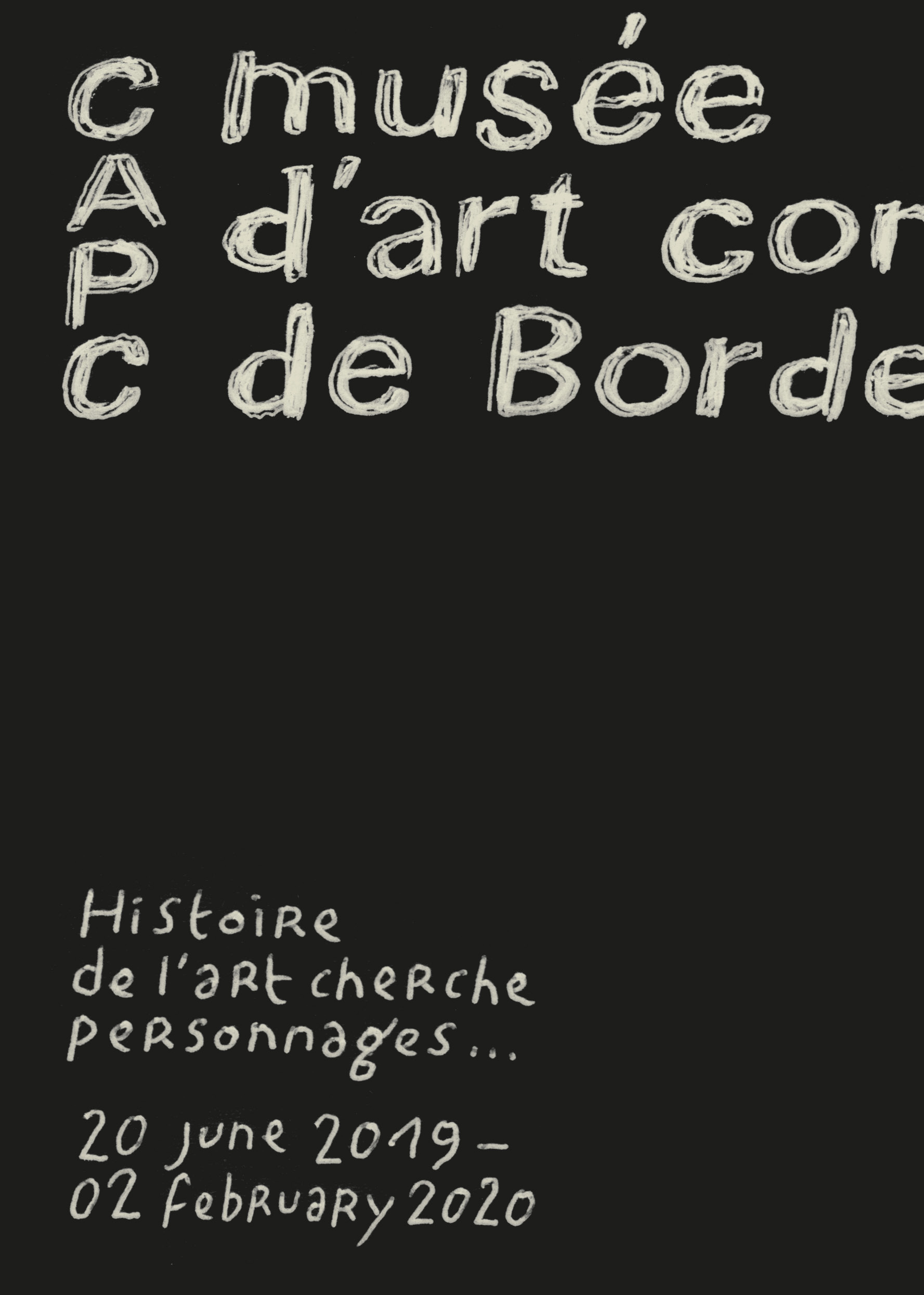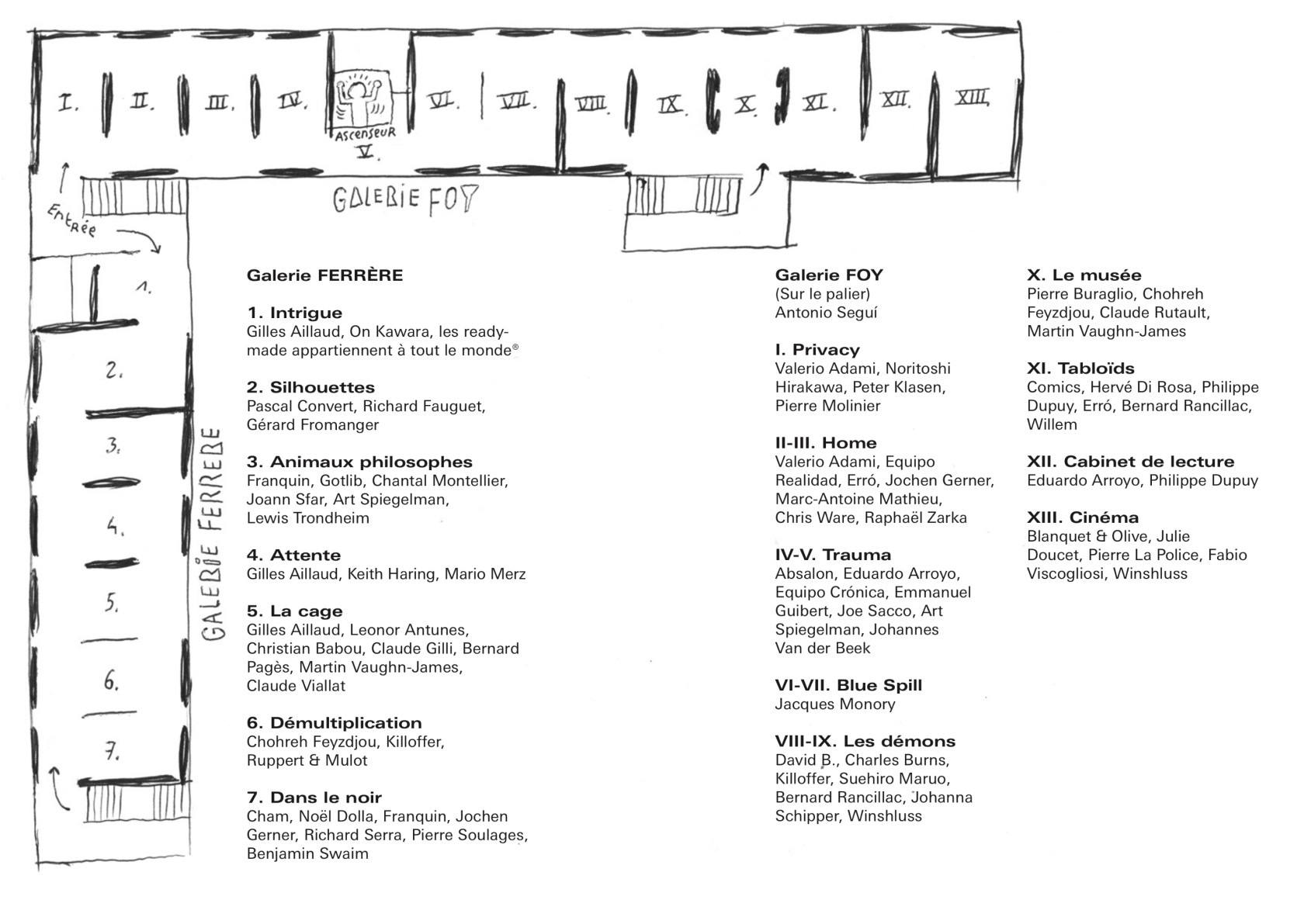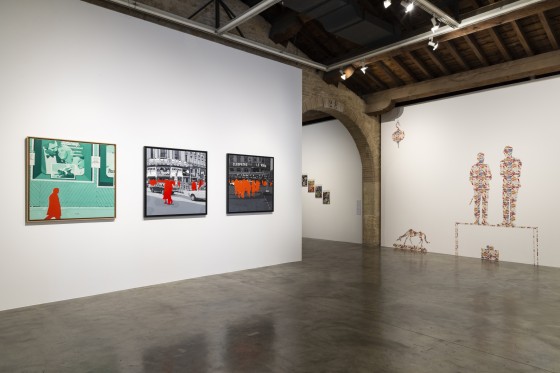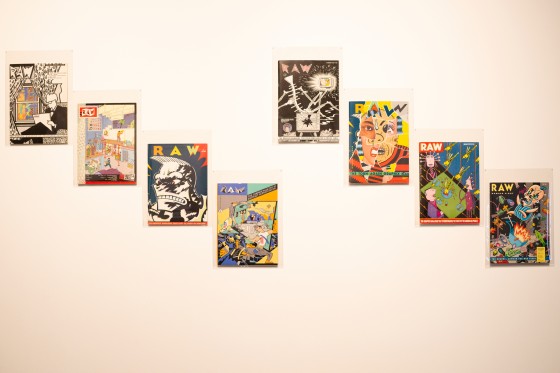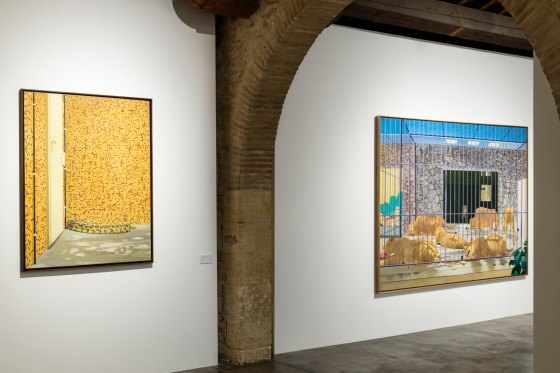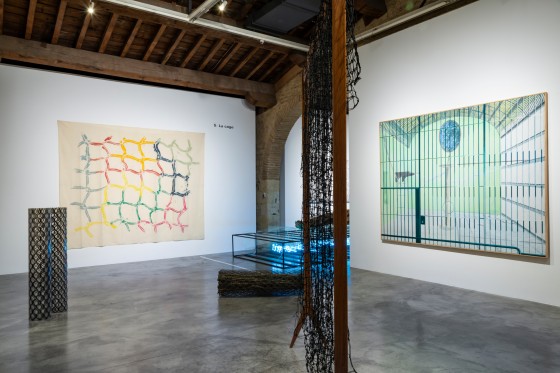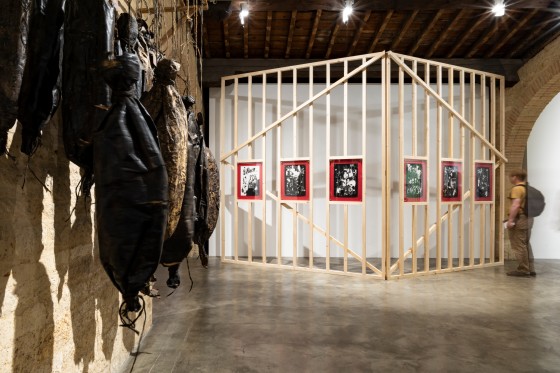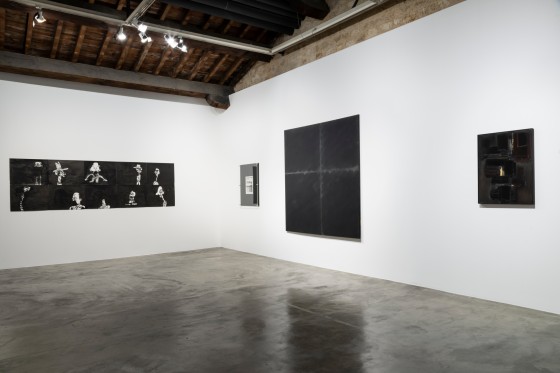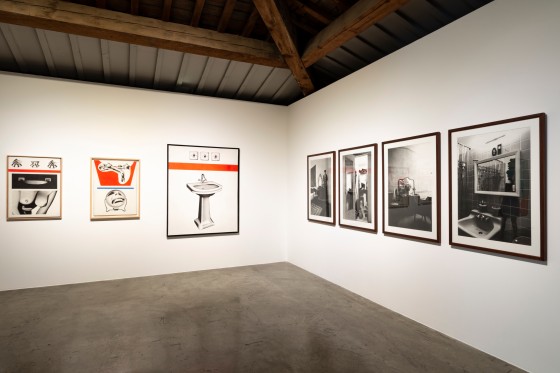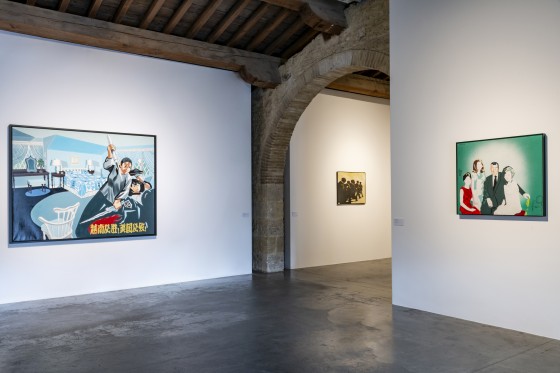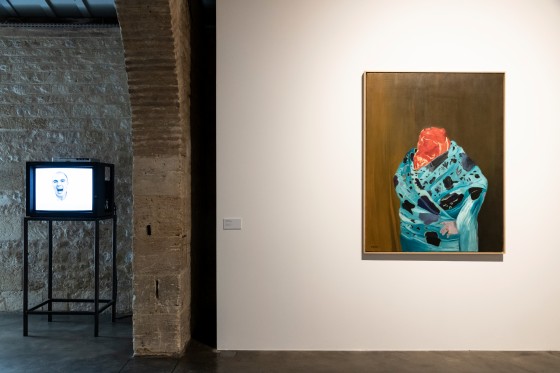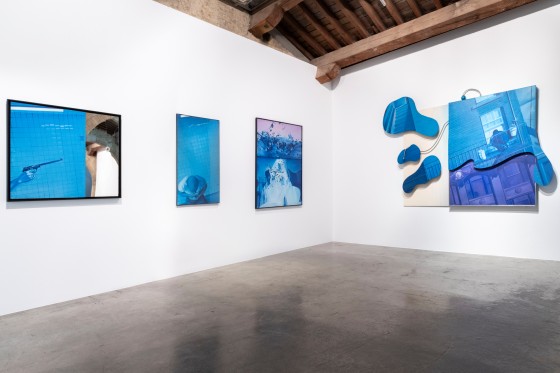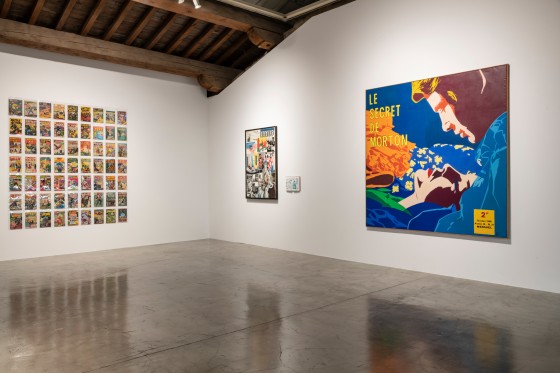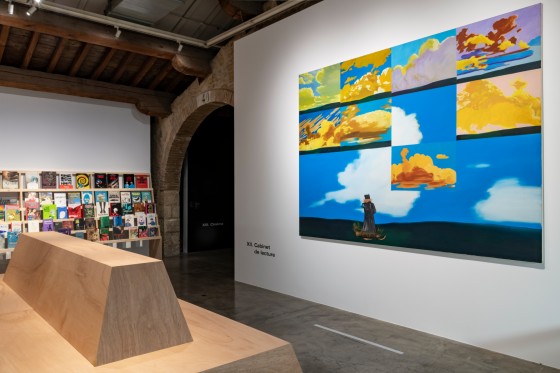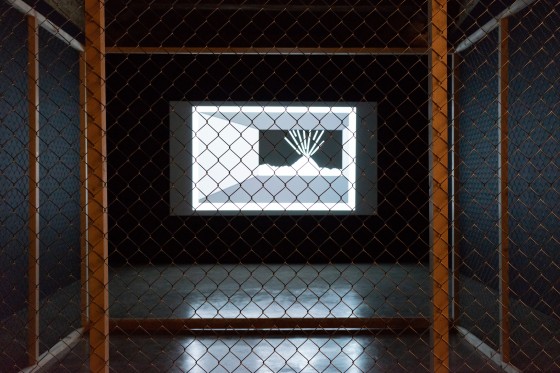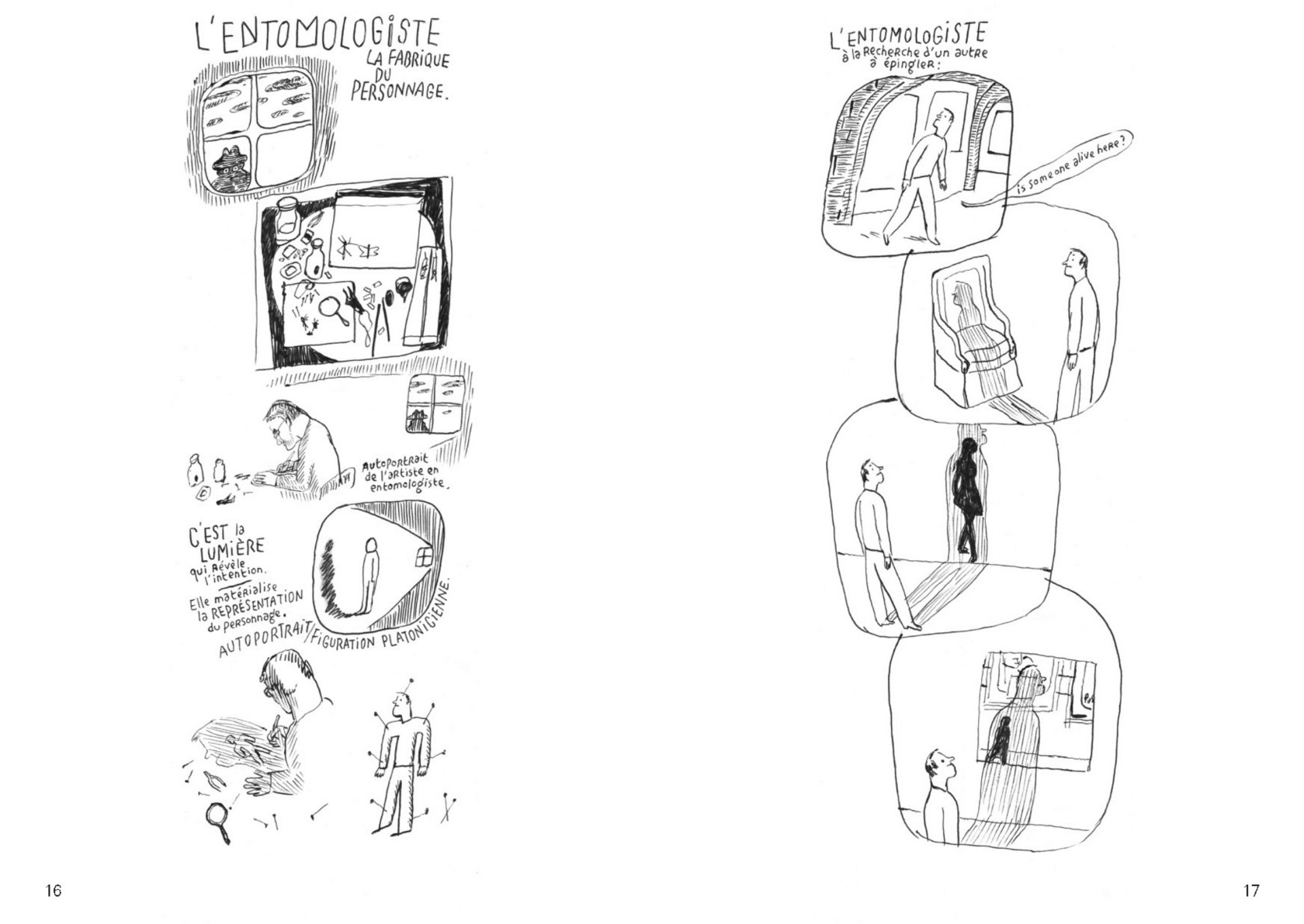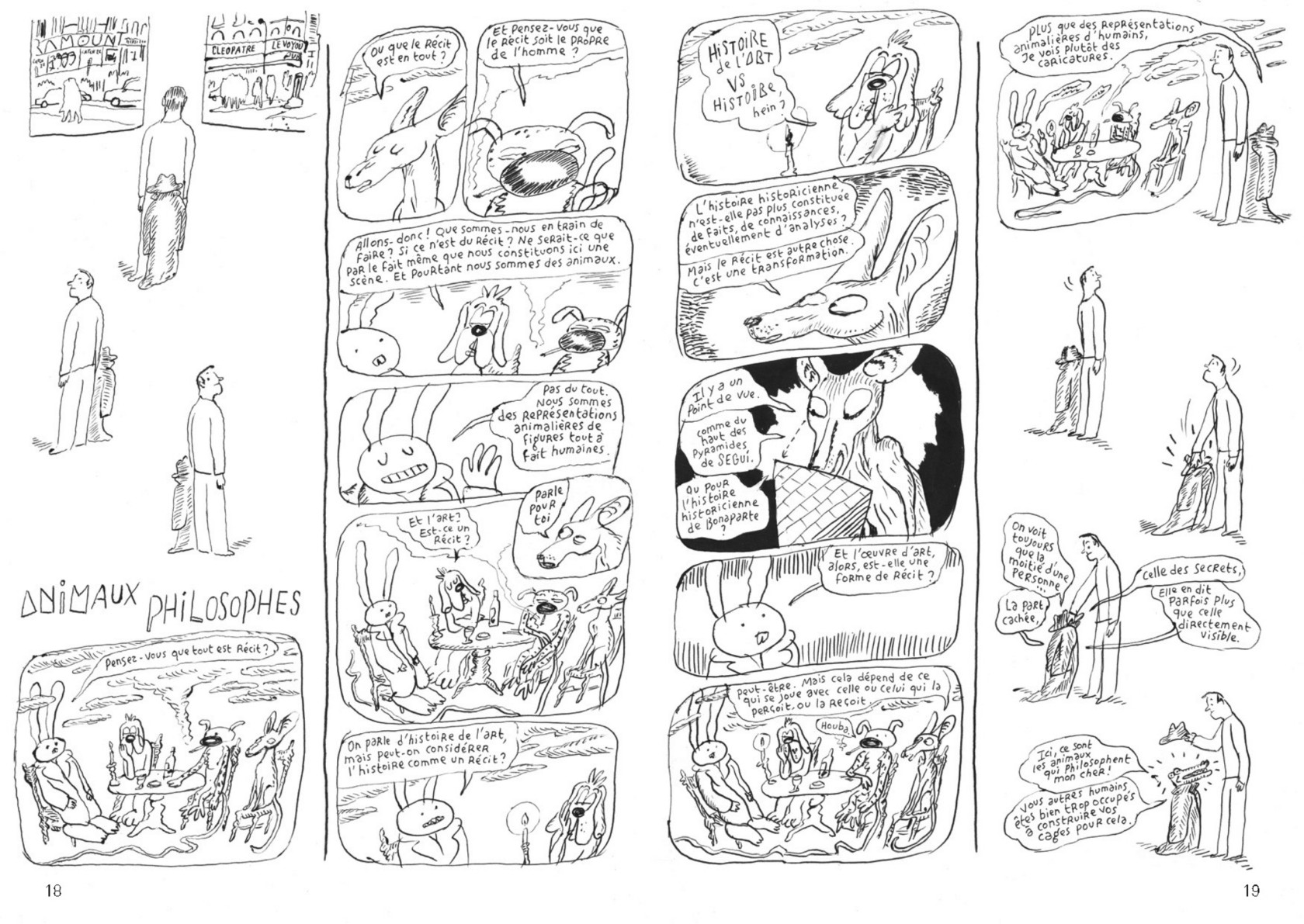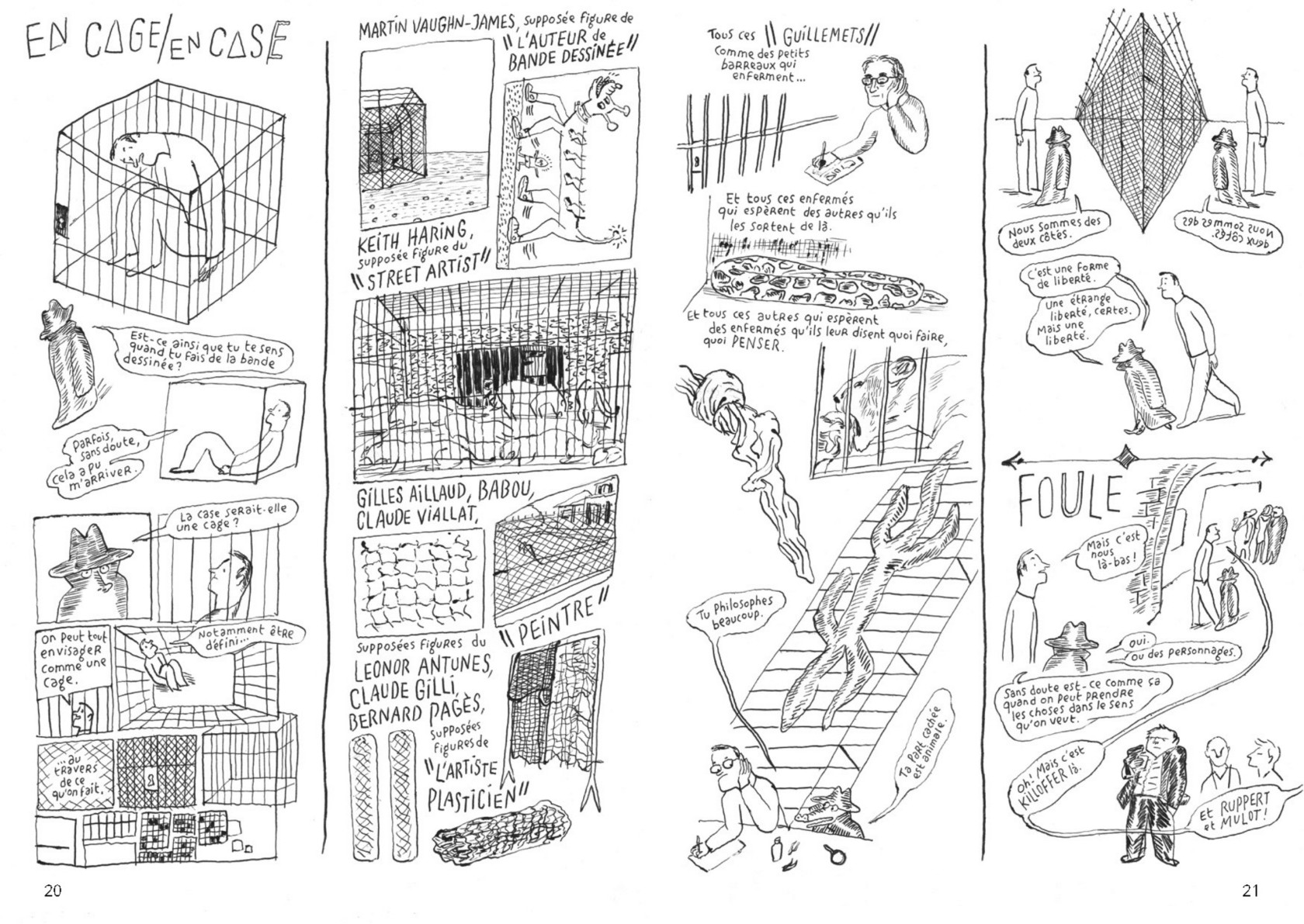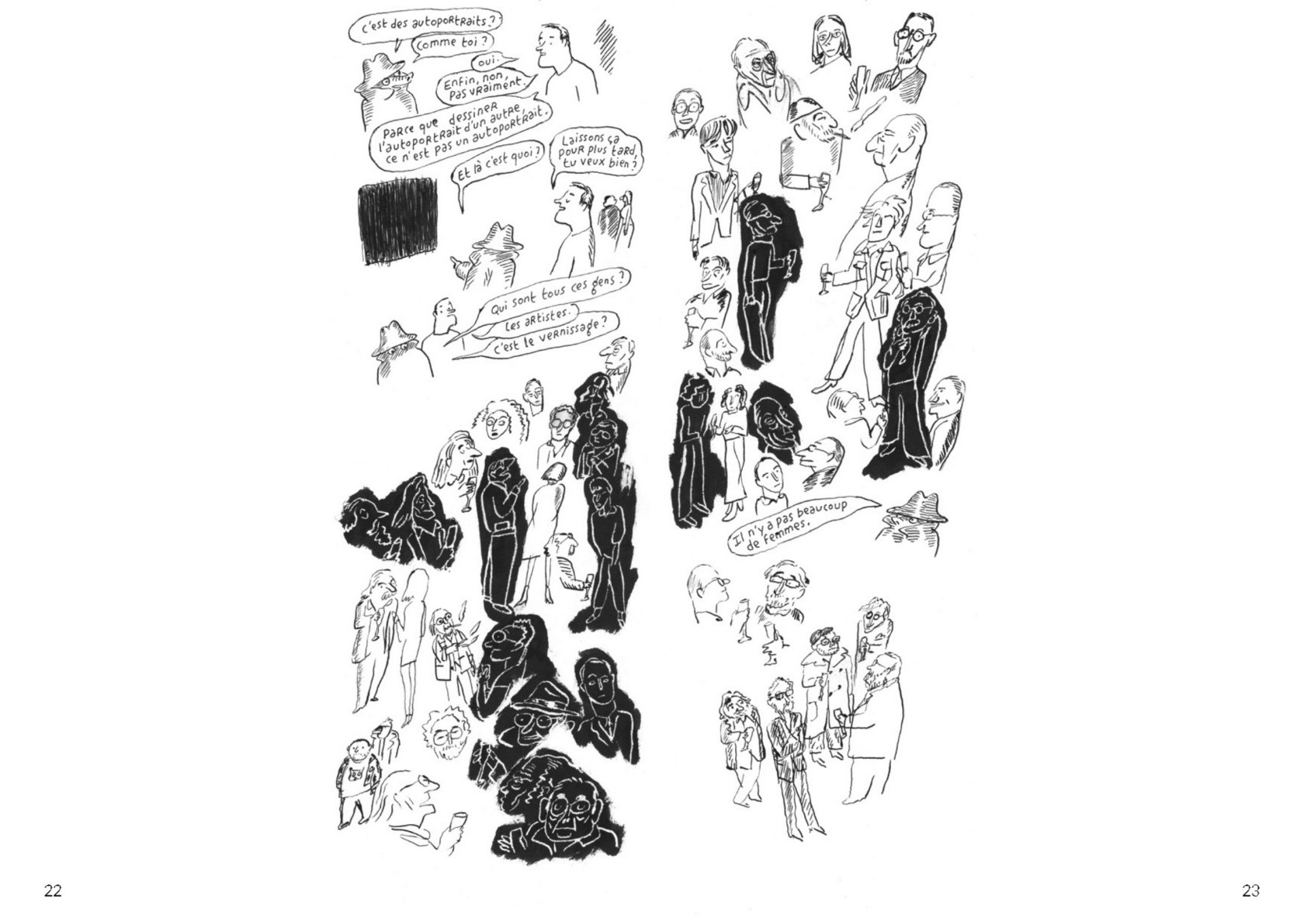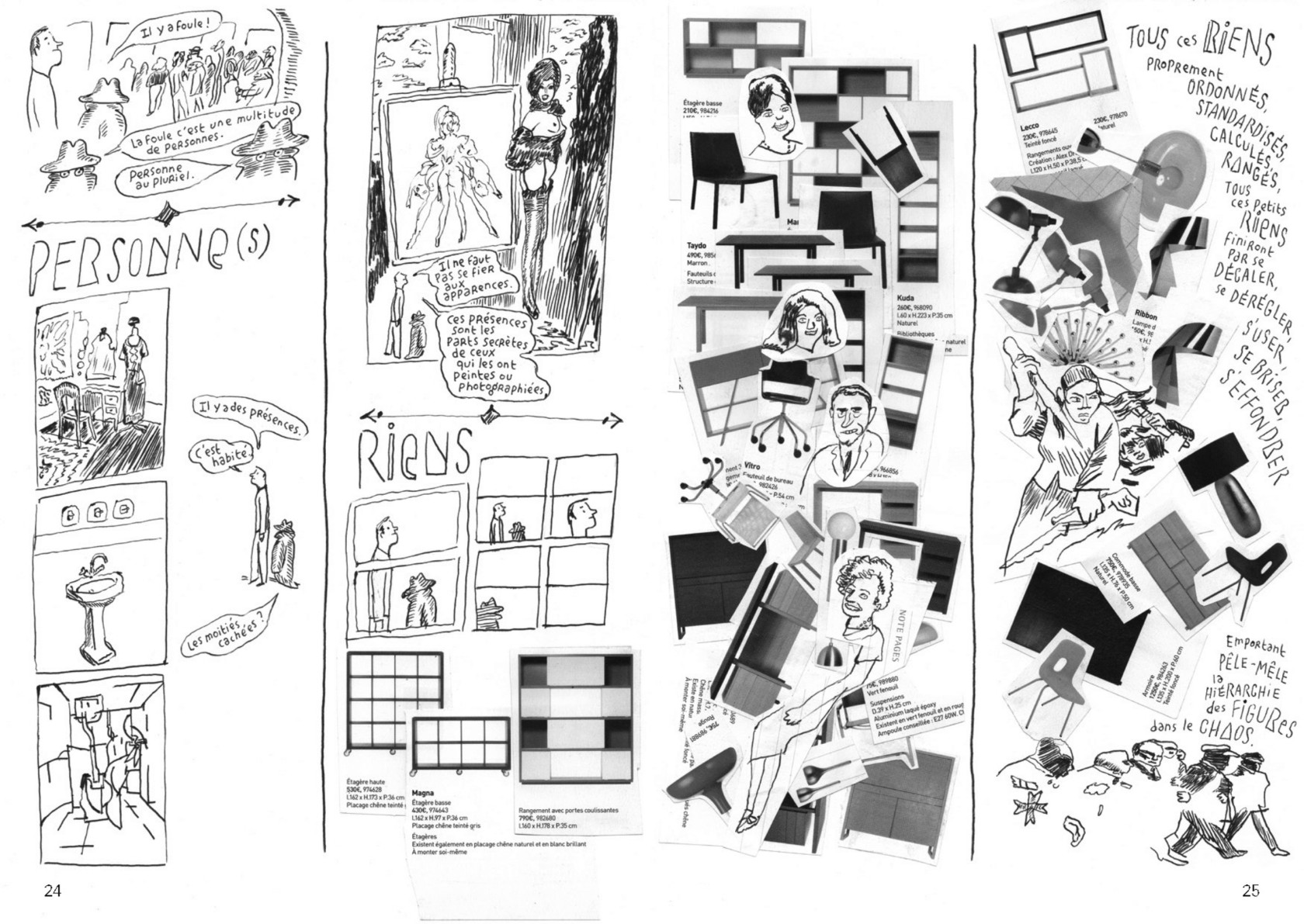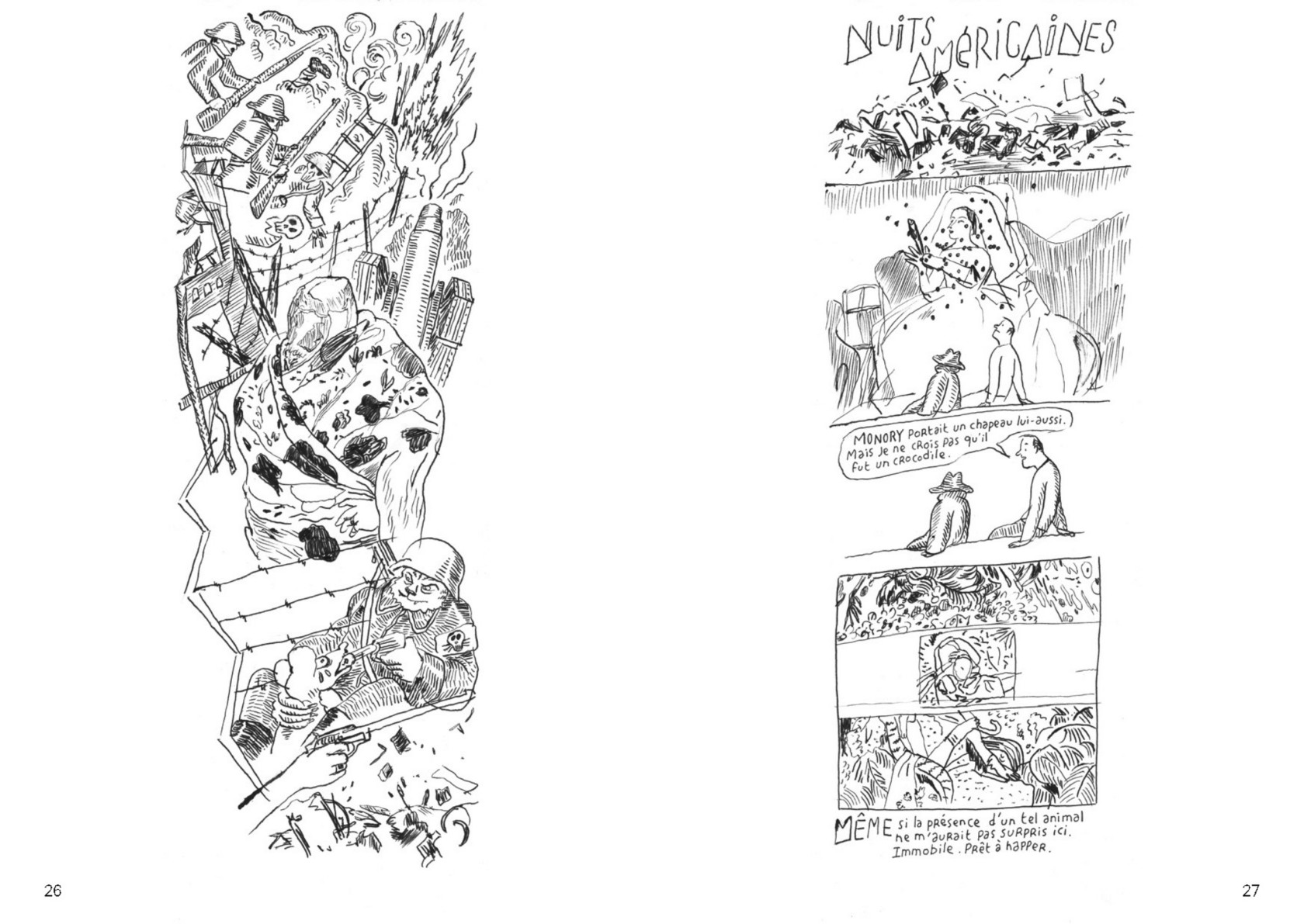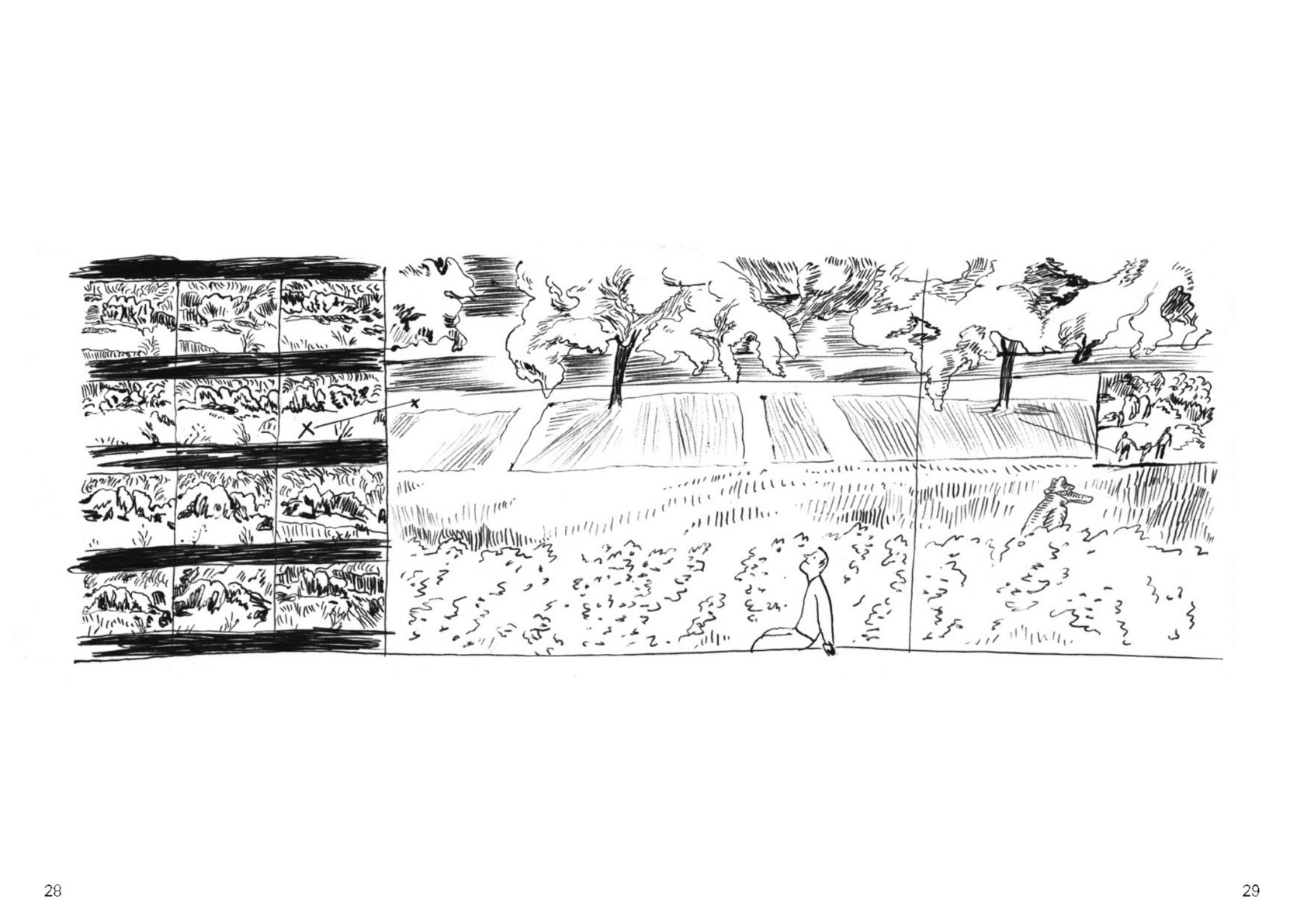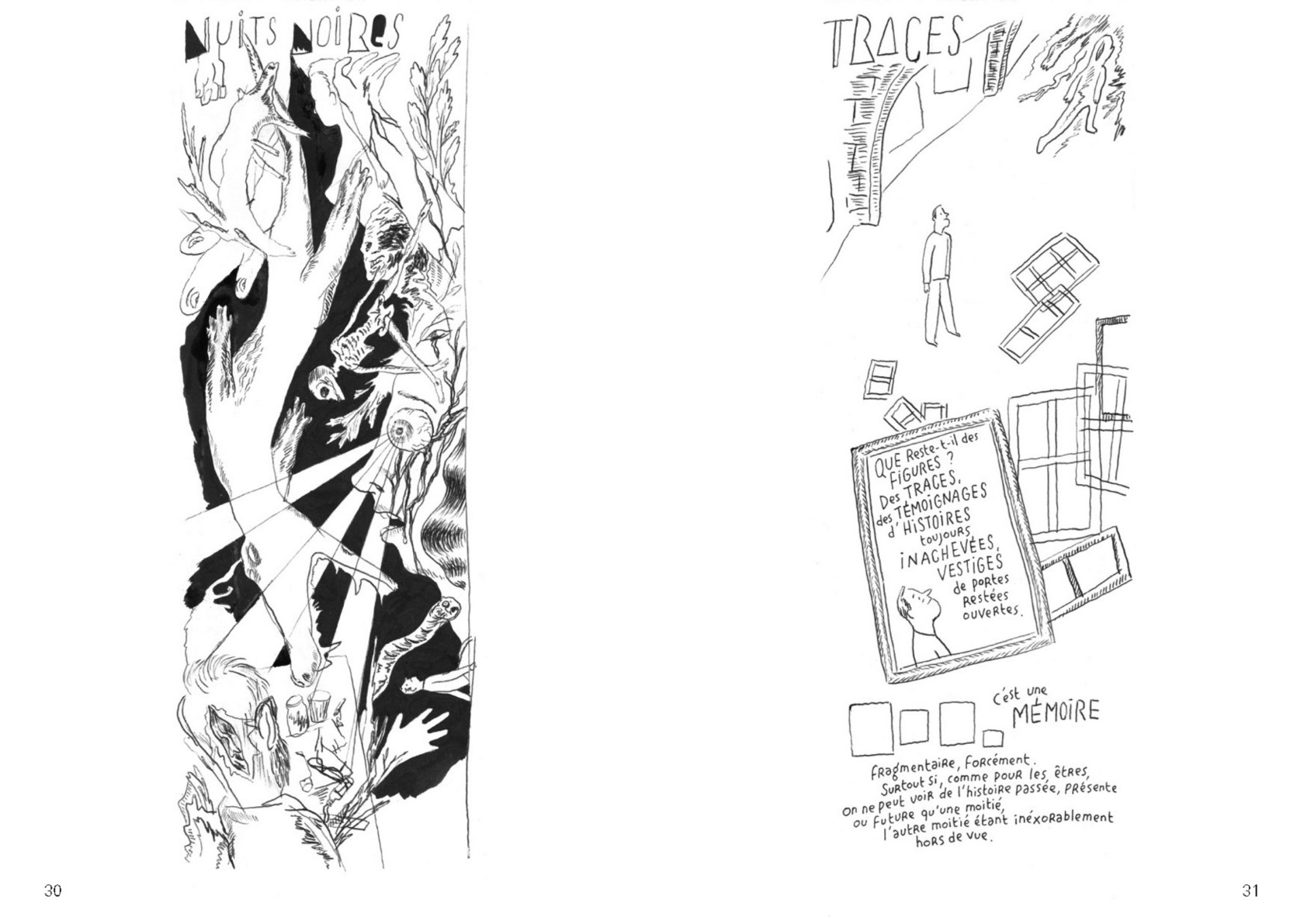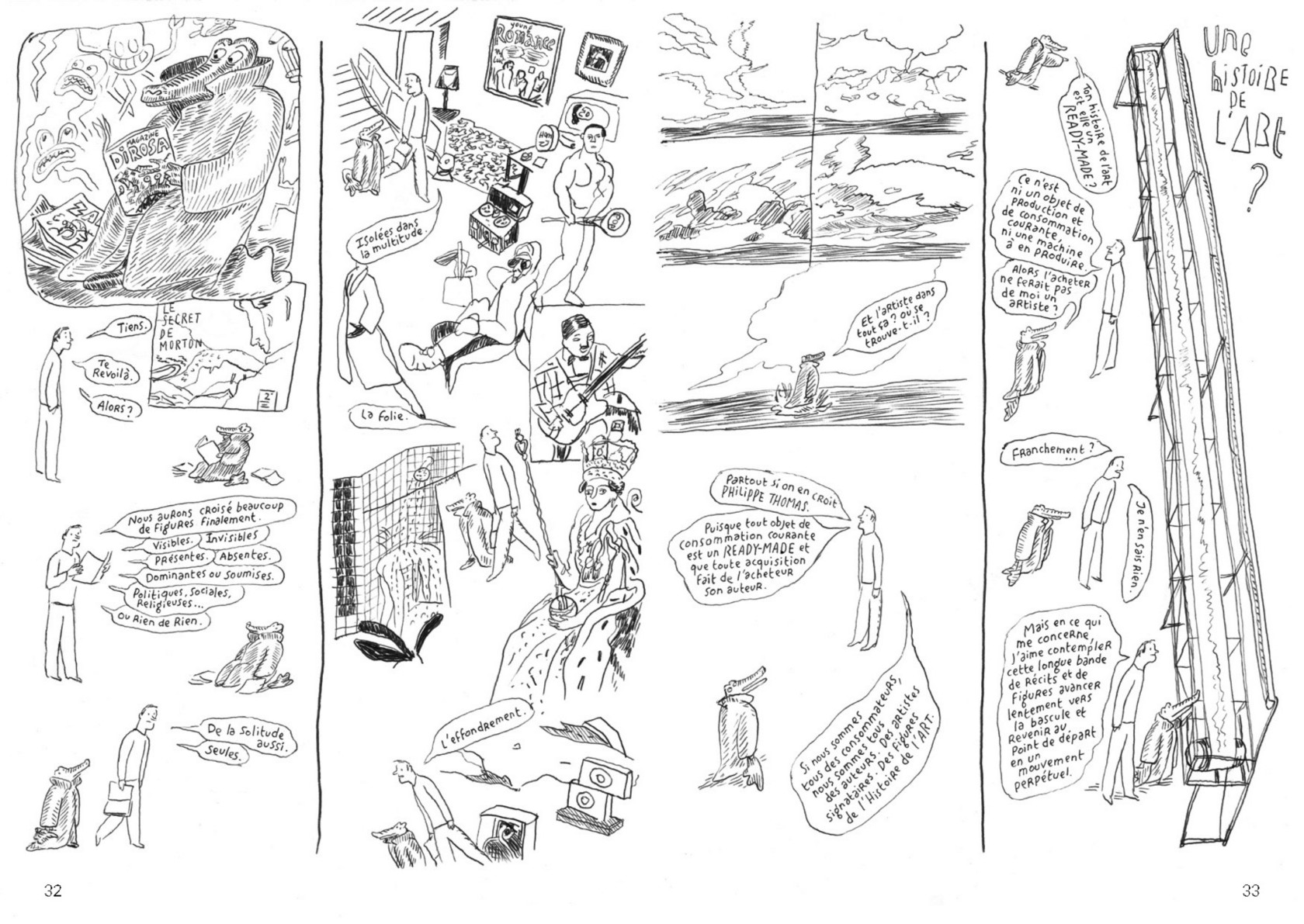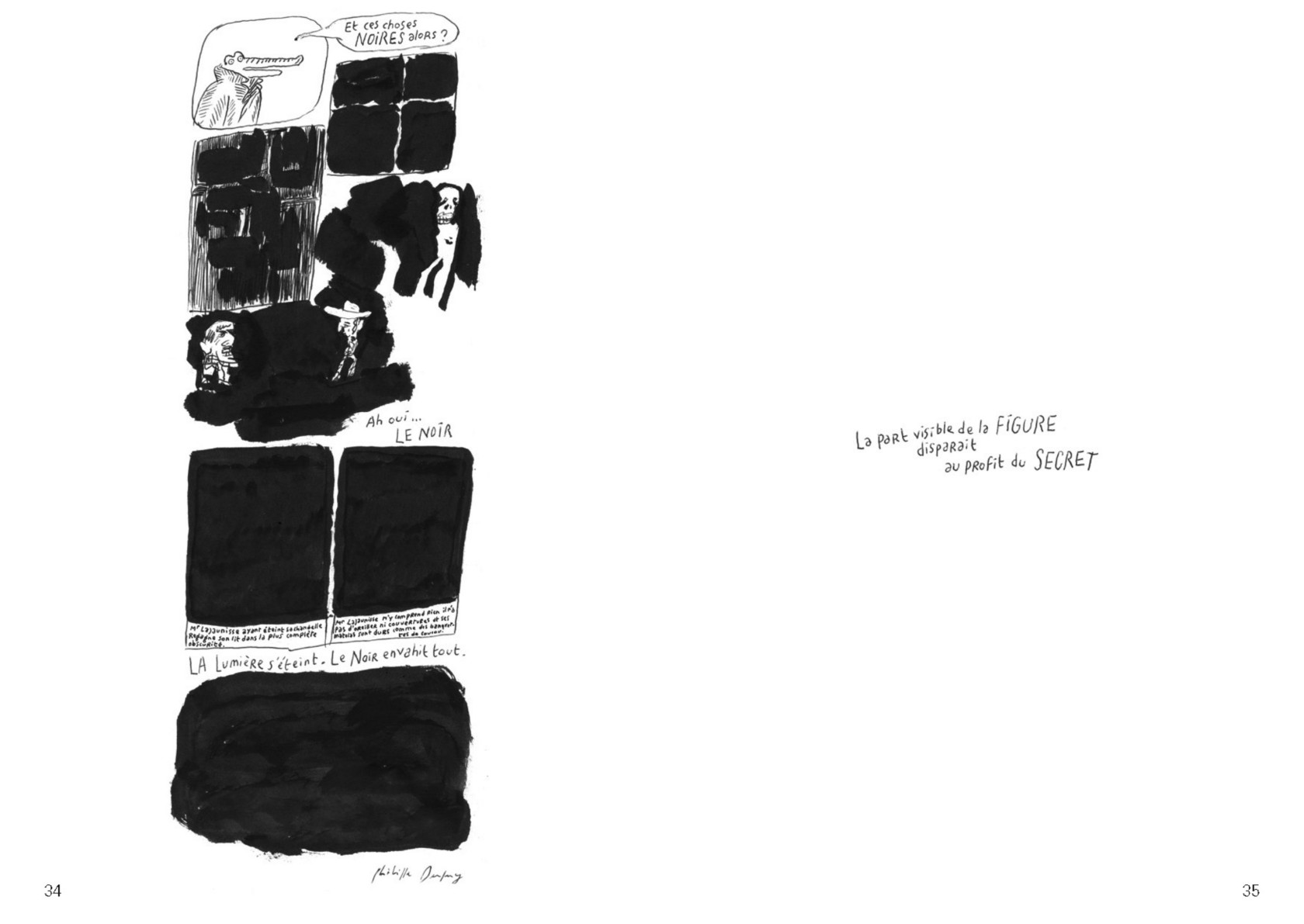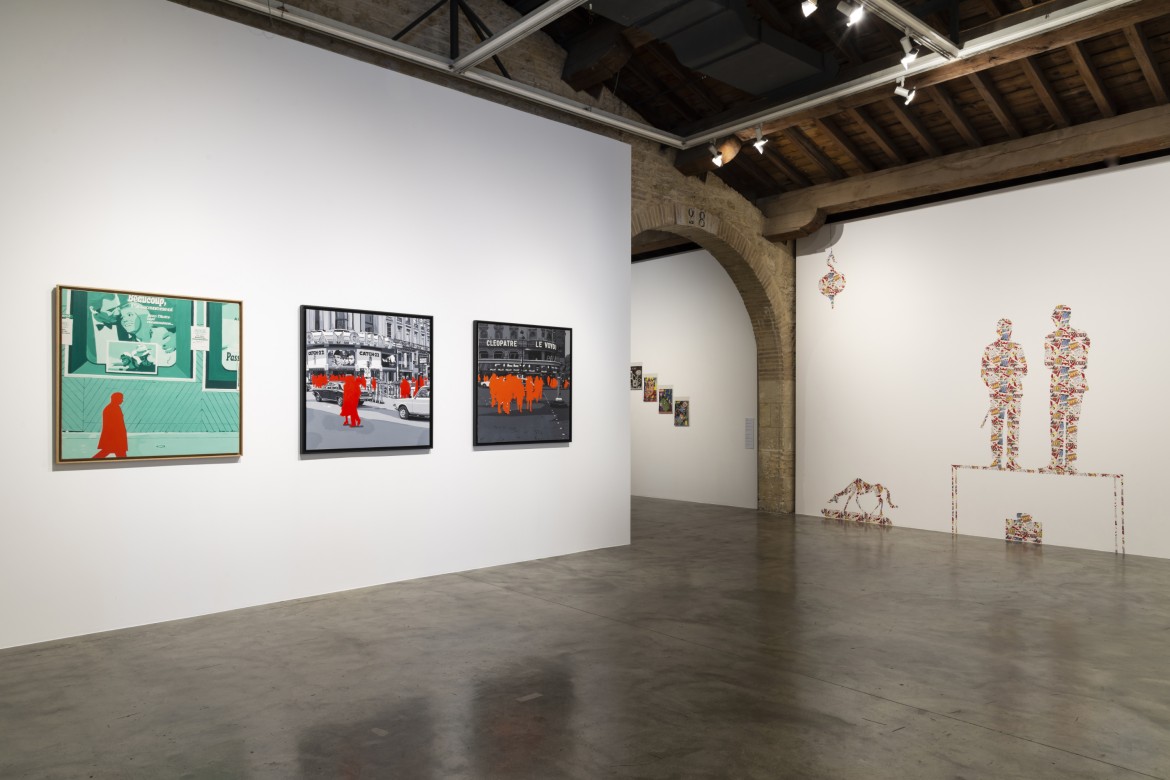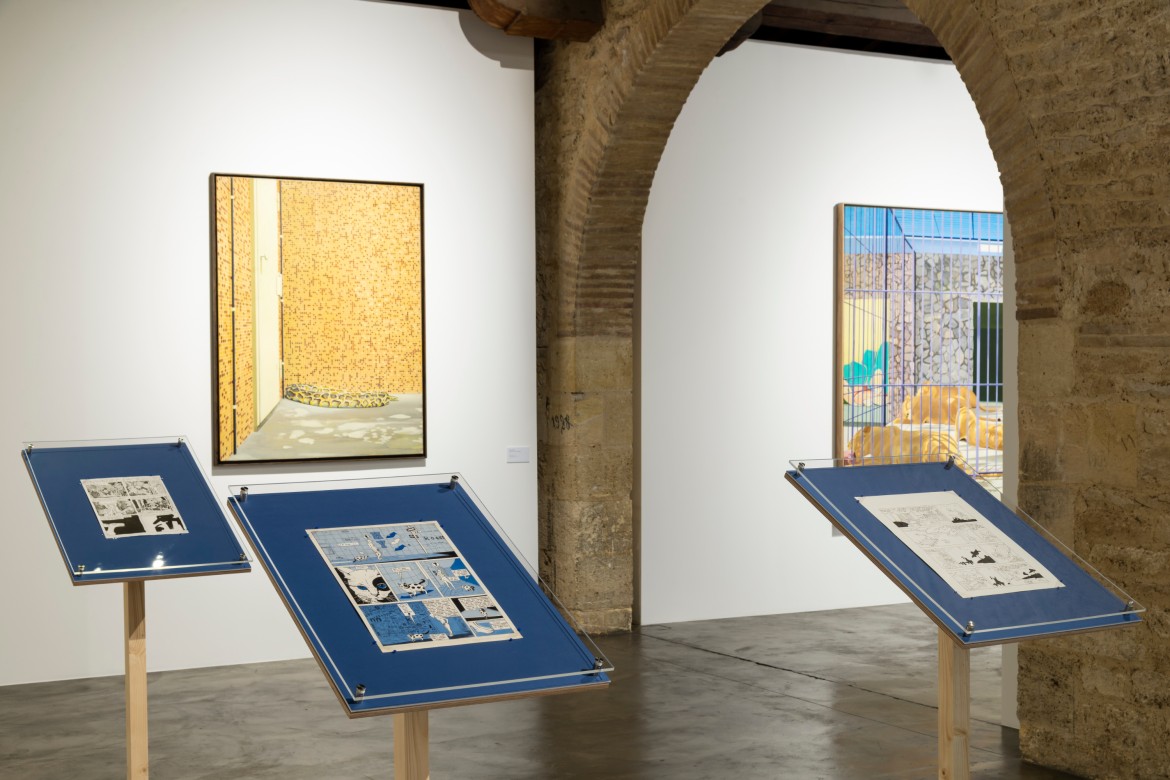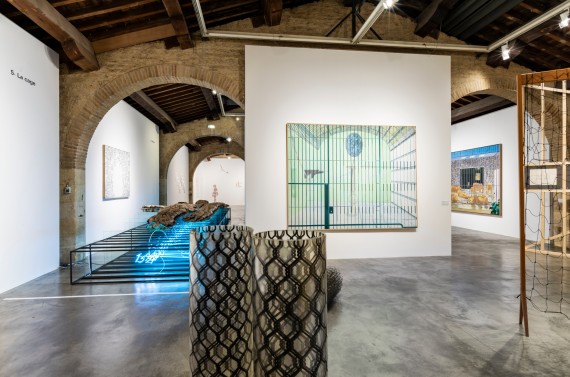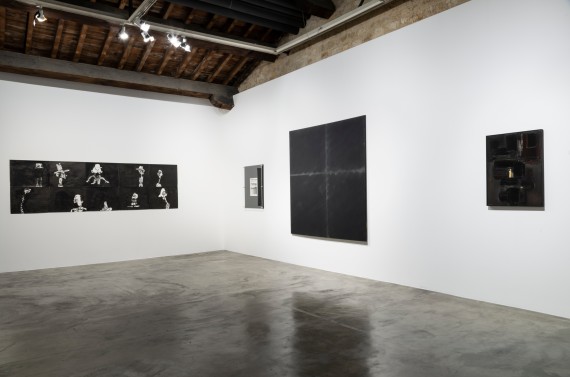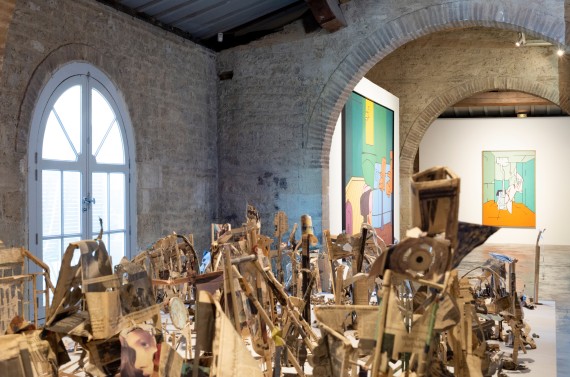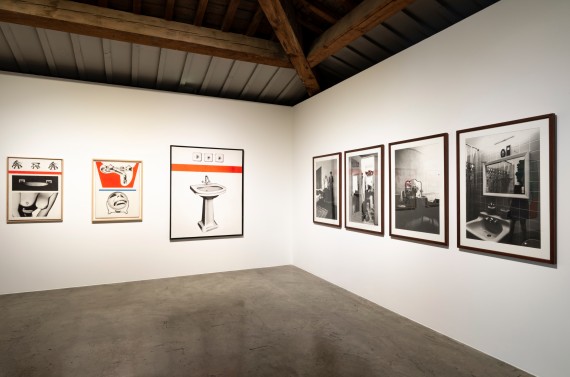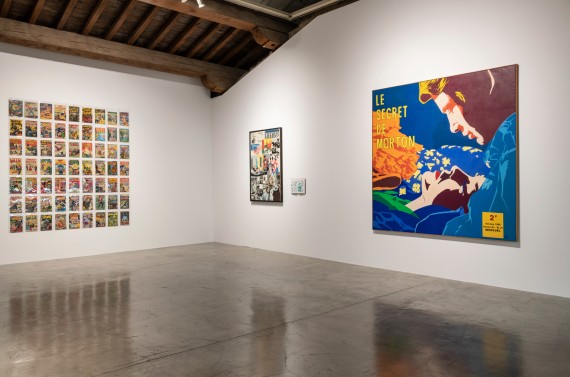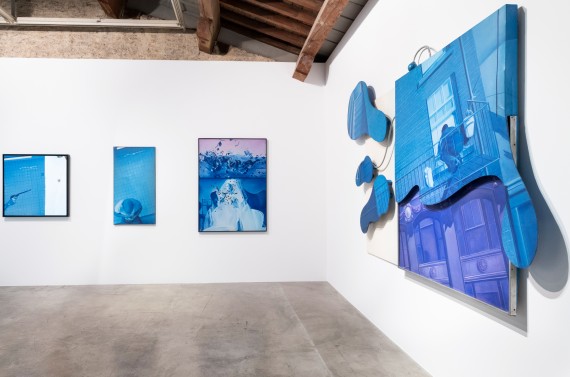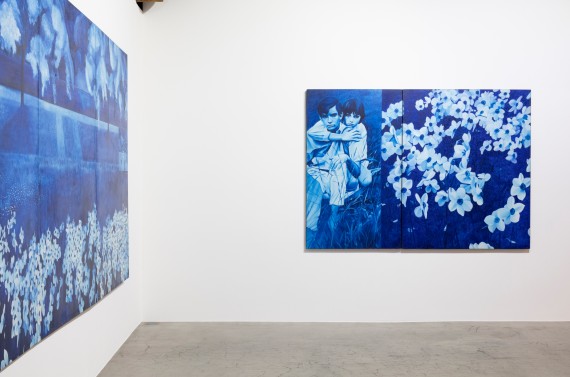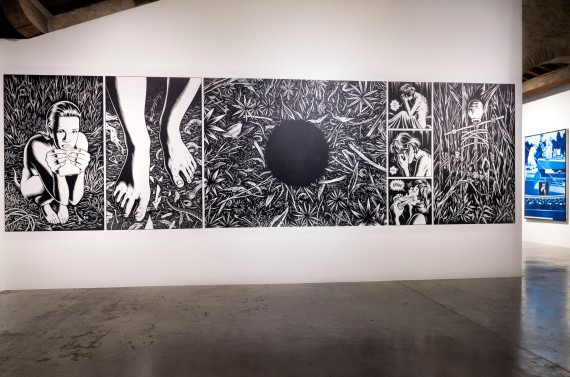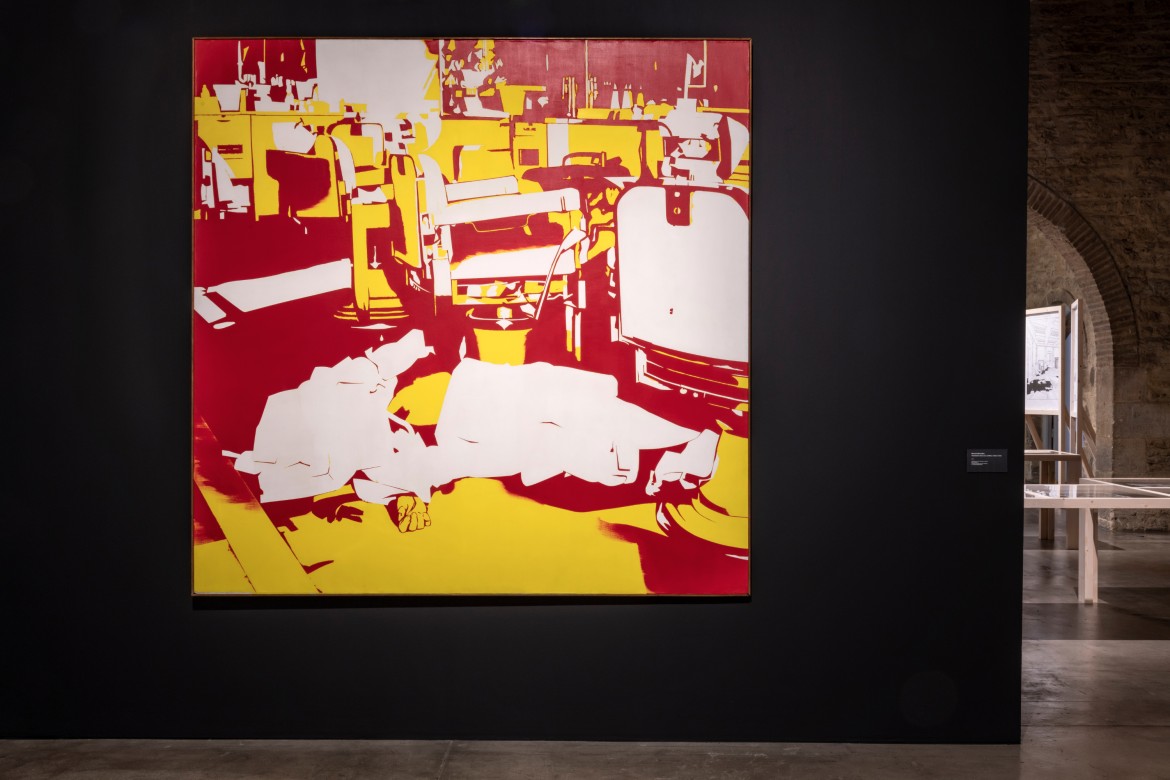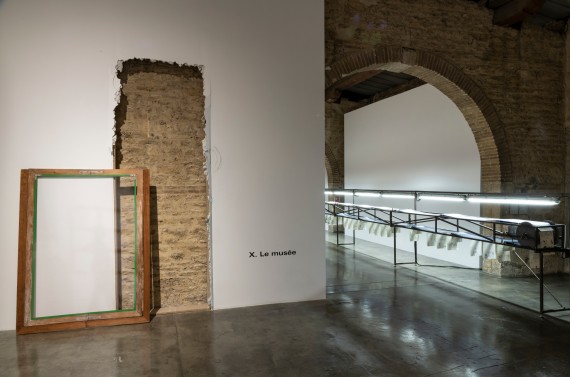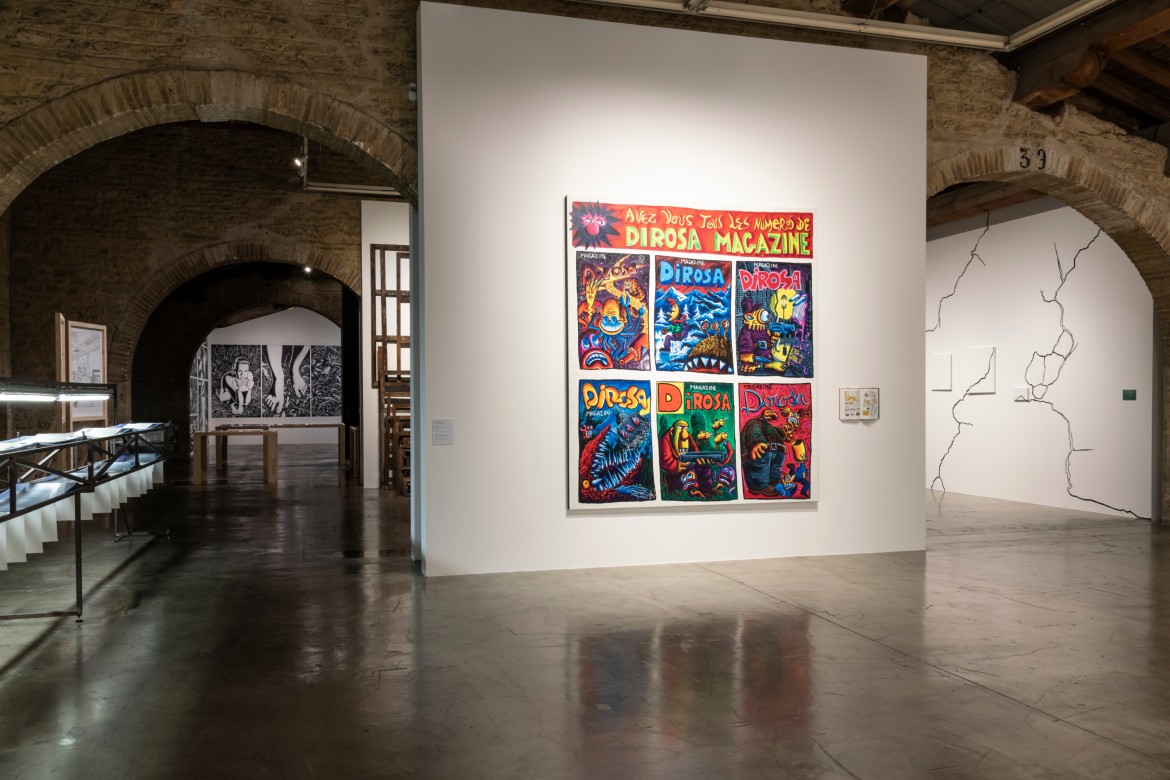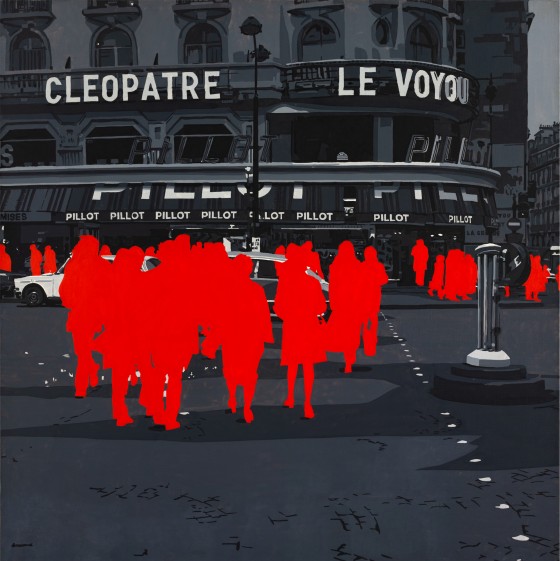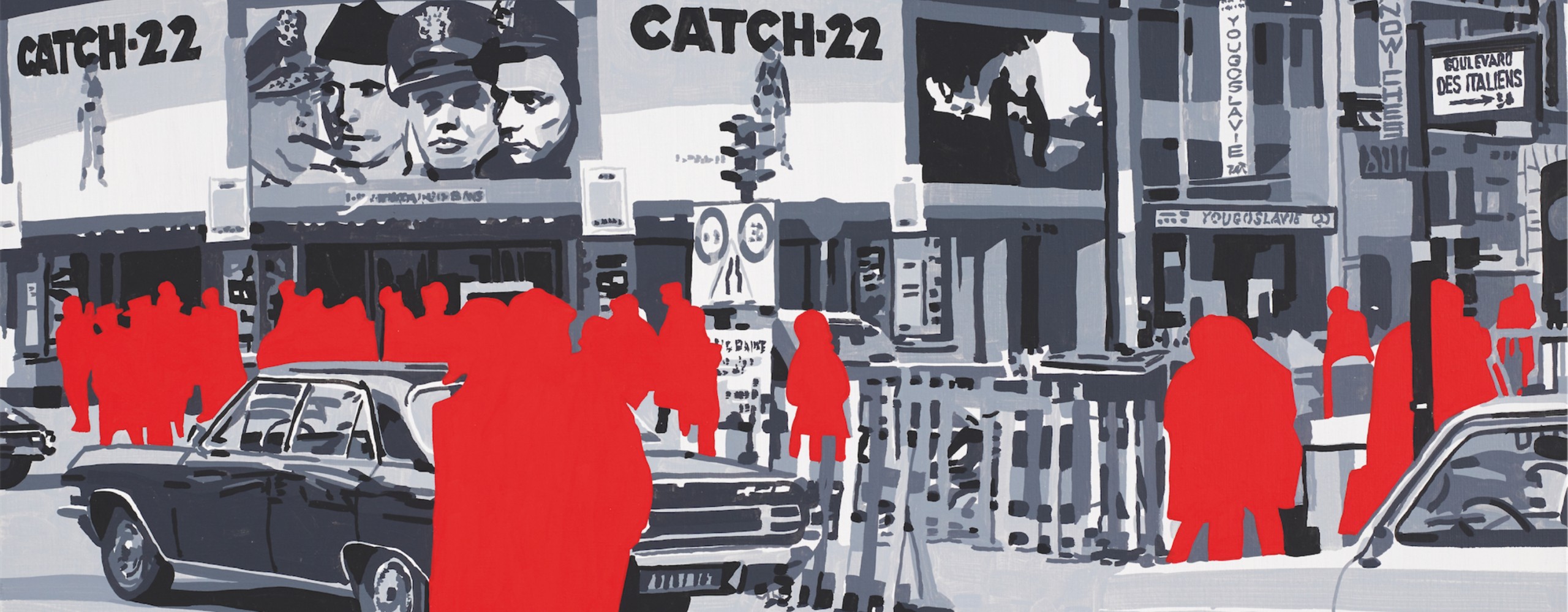
CAPC musée d'art contemporain de Bordeaux, Bordeaux (FR) 20 June 2019 - 22 March 2020
Histoire de l'art cherche personnages...
The CAPC musée d’art contemporain de Bordeaux has partnered with the Cité internationale de la bande dessinée et de l’image in Angoulême and the Fondation Gandur pour l’Art to present an extensive group exhibition based on their respective collections. Entitled Histoire de l’art cherche personnages… (History of Art Seeks Protagonists), the exhibition gathers over one hundred works focusing on the representation of the human figure and the individual’s existence in its struggle with the environment, with history and with others.
Curators : Alice Motard with Anne Cadenet and François Poisay (CAPC musée d’art contemporain de Bordeaux) ; Anne Hélène Hoog (Cité internationale de la bande dessinée et de l’image, Angoulême) and Yan Schubert (Fondation Gandur pour l’Art, Genève).
Major works from the Fondation Gandur pour l’Art forming part of the Narrative Figuration movement (paintings from the 1960s by Gilles Aillaud, Erró, Gérard Fromanger and Jacques Monory) are shown alongside original artwork (plates, graphic novels, installations) by contemporary comic-book authors, scriptwriters and artists, as well as selected works from the CAPC’s own collection. The works on display have been assembled into a thematic journey based on an original exhibition design that borrows its formal vocabulary from Martin Vaughn-James’s visual novel The Cage.
The first part of the exhibition is dedicated to formal explorations of human representation and existence. Between absence, disappearance, becoming-animal, incompleteness and proliferation, the artists’ quest essentially revolves around the human figure.
The second, more narrative, chapter of the exhibition is in search of meaning, or rather, of what ‘makes sense’ for humans. How do they consider their (material, moral, social) existence, how do they manage their relationships to others or themselves (their ‘inner demons’)? And how does the individual’s story, or history with a small ‘h’, fit in the grand narrative?
Among other things, this joint exhibition project aims to chart the main developments and achievements in the figurative arts since the end of the 1960s. To what extent have artists reconsidered the question of narrative or social and political critique? How do they manage to root their work in reality, this ‘precious movement of life’, as the art critic Gérald Gassiot-Talabot called it, which has undergone profound social, economic, geopolitical and technological changes?
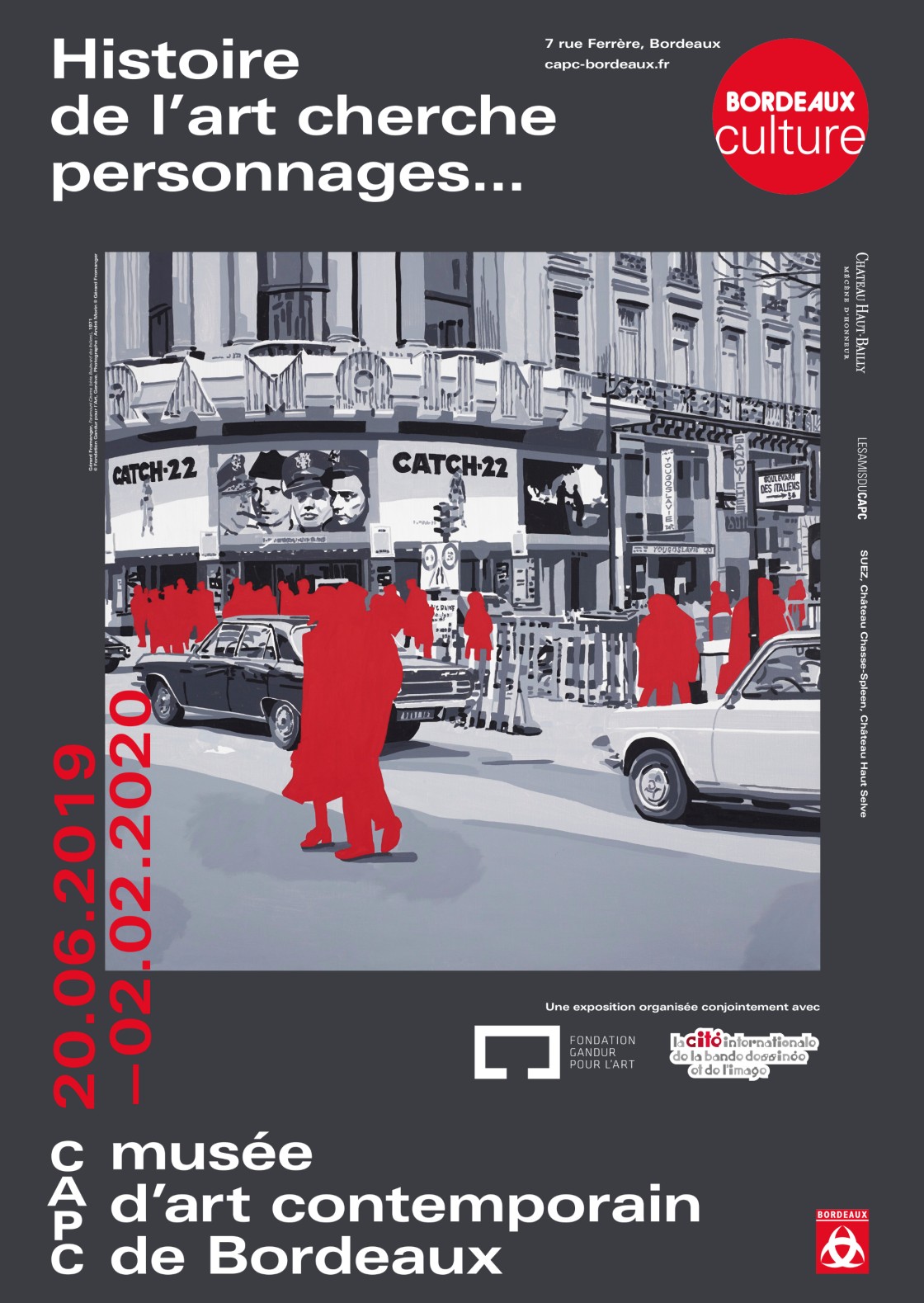
CAPC MUSÉE D’ART CONTEMPORAIN DE BORDEAUX (FR)
7 Rue Ferrere, 33000 Bordeaux
View on Google Maps
ADMISSION
Museum entrance: 7€
Reduced rate: 4€
Free admission on the first Sunday of each month (except July and August)
Horaires
Tuesday to Sunday from 11:00 to 18:00
Extended hours on Wednesdays until 20:00
Closed on Mondays and public holidays
The museum will be open on 14th of july and 15th of August, from 11 am to 6 pm.
Presentation
With:
Absalon, Valerio Adami, Gilles Aillaud, Leonor Antunes, Eduardo Arroyo, David B., Christian Babou, Pierre Buraglio, Charles Burns, Cham, Pascal Convert, Hervé Di Rosa, Noël Dolla, Philippe Dupuy, Equipo Crónica, Equipo Realidad, Erró, Richard Fauguet, Chohreh Feyzdjou, André Franquin, Gérard Fromanger, Jochen Gerner, Claude Gilli, Marcel Gotlieb, Emmanuel Guibert, Keith Haring, Noritoshi Hirakawa, On Kawara, Patrice Killoffer, Peter Klasen, les ready-made appartiennent à tout le monde®, Suehiro Maruo, Marc-Antoine Mathieu, Mario Merz, Pierre Molinier, Jacques Monory, Chantal Montellier, Bernard Pagès, Bernard Rancillac, Ruppert & Mulot, Claude Rutault, Joe Sacco, Johanna Schipper, Antonio Seguí, Richard Serra, Joann Sfar, Pierre Soulages, Art Spiegelman, Benjamin Swaim, Lewis Trondheim, Johannes Van der Beek, Martin Vaughn-James, Claude Viallat, Chris Ware, Willem, Winshluss, Raphaël Zarka
EXHIBITION PLAN
GALERIE FERRÈRE
1. Intrigue
An advertising poster, a figurative painting, telegrams… three works that have nothing in common: neither their creator, nor their stance, nor their affiliation with a movement in art history. However, each constructs its own plot.
The Histoire de l’art cherche personnages… exhibition focuses on a new paradigm, aiming to explore the ways in which the figure has been represented in the history of art: through painting, sculpture, comics, photography, video, and installation.
2. Silhouettes
Marks, imprints, silhouettes: although the human presence is evoked through absence in Pascal Convert’s wing chair, or reduced to figures by Gérard Fromanger, there is a clear interrogation about individuals and their environments in these works. Via a piece of furniture or an urban space, these two artists display different ways of reflecting about humans and their place in society:
3. Animaux philosophes
In the eyes of many writers and artists, animals are more than just rough drafts of humans in the history of evolution. They embody humans in their most unique capacity: thought. Artists have often used animals to make indirect observations about society. In comics and the visual arts, artists often use animals to explore the relationships between nature and culture.
4. Attente
For many artists, art can only fulfil its purpose and take on its full meaning through audience participation. Viewers must therefore be encouraged to think about their way of seeing. Expectation is therefore a central idea in the work: the artist has expectations, the subject has expectations, the audience has expectations…
5. La cage
The space is shared by seven artists: Gilles Aillaud, Leonor Antunes, Christian Babou, Claude Gilli, Bernard Pagès, Martin Vaughn-James, and Claude Viallat. Different media; different materials: works that divide a space, whether displayed on the walls or the floor. However, they represent the same recognisable form: grilles, mesh, cages, interlacing. This language is used by each of the artists as something that reveals or is revealed. Each of them transforms this shared element according to their own principles.
6. Démultiplication
While Killoffer and Ruppert & Mulot create multiple spaces by breaking the codes that traditionally govern comics (the panel), Feyzdjou’s use of the line separates, delimits, frames, and structures her story. For all these artists, the dark side of every story, real or fictitious, is essential – not to mention existential.
7. Dans le noir
Nobody knows what goes on in the dark. Darkness is the obscurity that absorbs light like a harbinger of doom. And yet, for many artists, it remains the obsession that drives an inexhaustible chromatic experience. Inescapably, darkness remains a vast continent of multiple meanings, through which we can examine our fears and express our relationship with the world, things, and beings.
GALERIE FOY
I. Privacy
From the 1960s, the representation of the private space, in opposition to the public space, expressed a transformation of perception and the gaze among artists. Subject from this point on to a critical sociological approach, the representations of privacy, private lives, and private spaces began using bodies and everyday objects to reveal the frustrations and paradoxes of the consumerist and materialist order, seen as oppressive for individuals and their desires.
II-III. Home
The confrontation of the private and public spaces is also accompanied by a critical artistic perspective on the notion of home. It emphasises the segmentation of family and social lives in the urban architecture. Representing imaginary places, the artists above all denounce the alienating phenomena of juxtapositions, alignments, order, and classification, which are manifested in the use of geometric forms and lead to standardised perceptions and lifestyles. This generates multiple, rigid frameworks, within which private lives and individualities struggle to flourish.
IV-V. Trauma
The opposition between the perfect interior world of homes and man’s barbaric potential invites us to reflect on the human capacity for atrocities, as embodied by Johannes Van der Beek’s landscape of ruins. War, a key element here, and the trauma it generates, is used to reflect on humankind and its capacity for destruction, as if war were an external expression of an internal conflict.
VI-VII. Blue Spill
Jacques Monory and blue go hand in hand. The presentation of eight works created between 1967 and 1975 immerses us in a strange and violent world where death awaits at every brushstroke, like a bullet fired from a revolver. This bullet tears through the canvas, smashes through the mirror, and leads to the hospital or the morgue.
VIII-IX. Les démons
The word ’demon’ refers both to the demonic being that torments us, and to the anguishes and obsessions that haunt Humanity, sometimes causing people to commit the worst of evils. It can be seen as having a destructive and harmful connotation, but among
the artists united by this theme, these definitions vary with the stories they tell. These works are not just about crime, horror, or madness. They also address the banal human condition: fear, illness, alienation, or the impossible quest for freedom. It is this shift that stokes our fears and reveals our spectres. Those we have buried deep within ourselves.
X. Le musée
The exhibition design for Histoire de l'art cherche personnages… takes its formal vocabulary from Martin Vaughn-James’ The Cage, a 1975 visual novel, with no apparent plot and no characters. Thus, in the exhibition, each support used for displaying drawings, comic book pages, or other works (i.e. the lectern, the billboard, the maze, the library, and the pyramid) has been designed with the universe of this unique narrative premise in mind. This recreated museum world is crumbling: it reproduces the instabilities, the cracks, and the stains of the settings devised for the strangely disturbing and sometimes apocalyptic sequences of The Cage, page after page, in places that seem to bear the scars of their past, just like the CAPC…
XI. Tabloïds
Positioning their works at the crossroads between history and art history, many artists and authors give their subjects a political meaning, in both form and content. The entertainment culture of the 1950s and 1960s spread stereotypes of women, social relationships, and morality. These were to become central elements in the critical arsenal of artists.
XII. Cabinet de lecture
Comics are difficult to exhibit: their stories and structure are inextricably connected to the book format, except for certain plates or short stories that can be read in a few sheets and can therefore be hung on the walls. It is the album, the book, that matters: this object that we hold in our hands, which combines illustrations and a narrative. Exhibiting a single plate would emphasise the artwork more than the story. It would truncate the plot. The reader needs to turn the pages to move on, discover what cannot be seen in a single glance, to get to the ending.
XIII. Cinéma
What is it that captivates us, like big kids, about those little moving pictures of Mickey Mouse on our screens?
There’s no fooling the children now. They know very well that the adult world is a pack of lies, and that nothing will change. They will look on, consoled only by the thought that although it seems futile to try and change the situation, they can at least still laugh at it.
Artworks in focus
June 2019 Fine Arts
Le Voyou by Gérard Fromanger
An exhibition entitled Histoire de l’art cherche personnages… will open on June 19, 2019 at the CAPC musée d’art contemporain in Bordeaux, organized jointly by the Bordeaux institution, the Cité internationale de la bande dessinée et de l’image in Angoulême, and the Fondation Gandur pour l’Art. It provides an opportunity to focus on the work of Gérard Fromanger, in particular Le Voyou.


